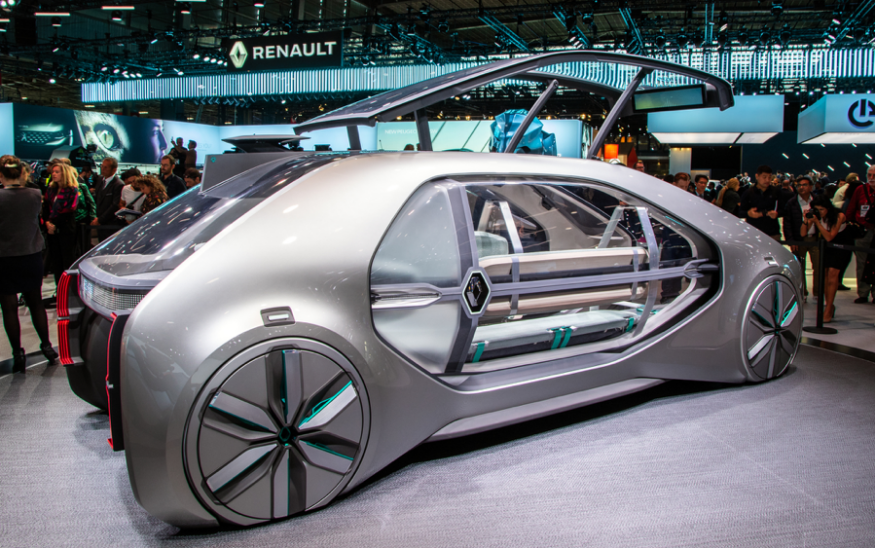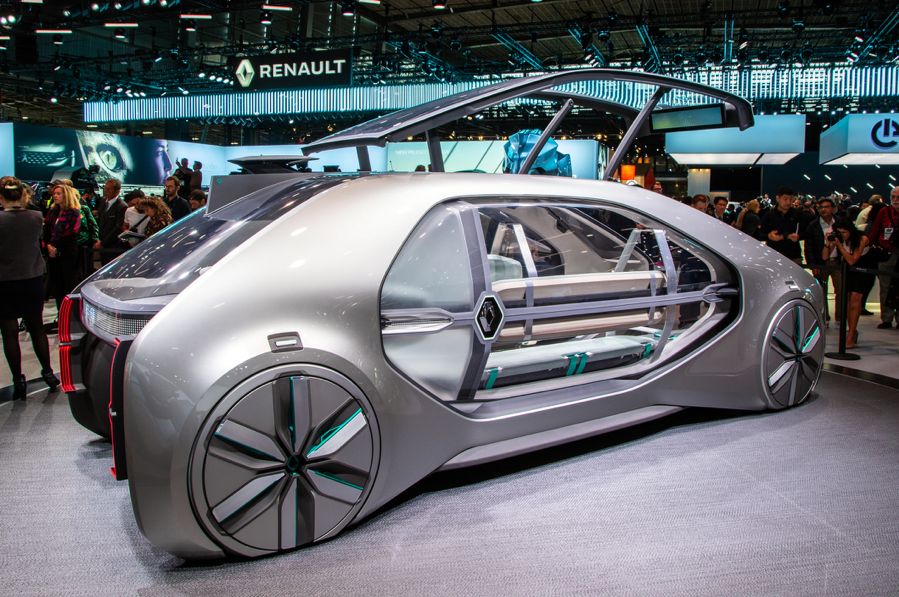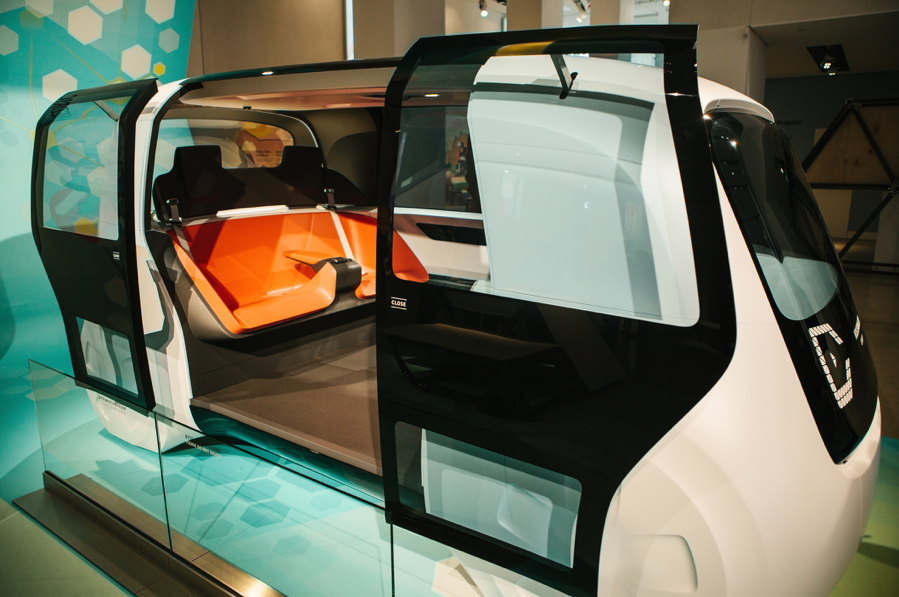For Driverless Cars, the Hardest Design Problem is the One You'll Never Guess
The Futurist: As individual car ownership dwindles, what are the next-gen problems?
Thomas Frey //January 23, 2019//


For Driverless Cars, the Hardest Design Problem is the One You'll Never Guess
The Futurist: As individual car ownership dwindles, what are the next-gen problems?
Thomas Frey //January 23, 2019//

For car designers, the rapidly approaching driverless era is giving them an entirely new set of design challenges to deal with.
For the past 120 years, cars have been designed around the operational side of the vehicle, primarily driving. As dealerships sprung up around the world, the relationship between the buyer and salesman turned cars into a status symbol, design features and the overall appearance of the car quickly rose in importance.
Today, however, the entire automobile industry is in the midst of a transition. As a mature industry that touches the lives of billions of people around the planet, changing from driver to no-driver vehicles will cause massive ripple effects to sub-industries, service industries and even tangential support industries that have no direct connections to any part of the automotive world.
Car ownership will change. Land use policies will change. The way cars are sold, services, cleaned, paid for and maintained will also change.
Virtually every job related to the automotive industry will be affected in some way. Parking lots, garages, traffic cops, traffic courts, gas stations, tire shops, emissions testing, drivers licenses, traffic cones, weigh stations, guardrails, stoplights and DUIs will all begin to disappear.
With very few actual use case studies to guide our thinking, car designers are doing their best to guess how people will interact with the cars, van, trucks and buses of the future.
To make matters even more challenging, the way people interact with the cars of the future will continually change along with the altering ratio of drivers-vs-no-drivers on the road.
As the number of driverless vehicles reaches 5 percent, 10 percent, 20 percent and 50 percent, we will begin to see a number of usability shifts take place, as both comfort and convenience improve and as we develop higher levels of trust in both the vehicles and the overall system.
Ease of ingress and egress will become hugely important, as the operators of driverless fleets will want to maximize the efficiency of each transaction.
But the greatest design challenge of all will be the car seats for children.
THE GREAT CAR SEAT DEBACLE
For parents, the safety of their children takes priority over virtually every aspect of life.
The elaborate process of strapping kids into their seat and buckling each of them into a five-point harness has become a routine part of life for moms and dads everywhere.
And most parents are willing to pay extra for kid-friendly cars and extra safe car seats.
As individual car ownership starts to dwindle and disappear, both from a system operation and car design standpoint, the primary challenge will be to have the right number of cars with the right number of car seats in the right place at the right time.
But even if fleet owners can figure that out, car seats have major cleanliness issues.

Let’s face it. Kids are messy, dirty, get sick, throw up, toss things, and find ways to turn a perfectly clean vehicle into a waste management problem in a matter of seconds.
Parents won’t want to carry a car seat with them because they’re heavy, hard to strap in and will have to be dealt with whenever they get to where they’re going.
Fleet owners will not want to ignore kids because it represents a significant percentage of the marketplace, and they will have similar design issues dealing with pets, service animals, handicap people, elderly, and politicians.
What if a daycare center needs a vehicle with six car seats? What if a dog trainer has to pick up four dogs? What if an assisted care center has three people in wheelchairs that want to travel together?
DEALING WITH CLEANLINESS
In the past, the onus of a clean vehicle always rested on the shoulders of the driver. But no driver means no one to clean the vehicle.
Designing a self-cleaning car is a far different challenge than designing a self-driving car.
It sounds easy to have robotic arms pop out of the floor that will quickly vacuum, wipe down and disinfect all the surfaces. However, this is an extremely complicated set of tasks.
What if the departing passengers left something behind? Perhaps it’s a purse, phone or set of keys. More likely it will be a half drank bottle of water, candy wrapper, or piece of trash. How does the robot know if the items are valuable or not, and how will it respond to each new situation?
None of these are insignificant issues and the artificial intelligence incorporated into an operational system like this will take years to perfect.
POTENTIAL SOLUTIONS
It may be possible to design car seats that simply “flip out” of the existing seats. Push one button and the car seat appears. Yes, this will be a massive design challenge but it is indeed possible.
With front and rear-facing passenger seats, it will be easy to have the same option for child car seats.
Universal harnesses can also be adjustable to accommodate any size child.
In this scenario, picky parents need only add a clean liner before strapping their child into the seat, but most will probably skip the liner step.
Large vehicles will allow for 5-6 car seats for large families. Some will even come with a diaper-changing table in the center.
The biggest challenge will be in the early adoption stages of driverless technology when accident rates and human injuries are still high. Once vehicle safety starts to improve, this will become less of an issue.
As I’ve said many times, driverless technology will be the most disruptive technology in all history. And it will also come with it’s own complicated set of design issues.
Fleet privacy will become a huge issue. Is it ok to have cameras monitoring the inside of the car 24/7? Fleet owners will argue that it’s necessary to prevent vandalism and to know when the car is dirty. Riders will hate the idea of being spied on.
Business people, who would rather not deal with anything left behind by kids, pets, or the elderly will have the option of ordering higher-priced, but more business-friendly vehicles.
In fact, fleet owners will face constant challenges to have the right style and selection of vehicles to meet the ever-changing demands of their customer base.
In general, adoption rates will depend heavily upon pricing, which in turn will be determined by market forces and the overall level of competition between fleet owners.
Autonomous vehicles will pave the way for an exciting new wave of transportation, but it will take several iterations of change before we truly understand the challenges and opportunities that lie ahead.
























